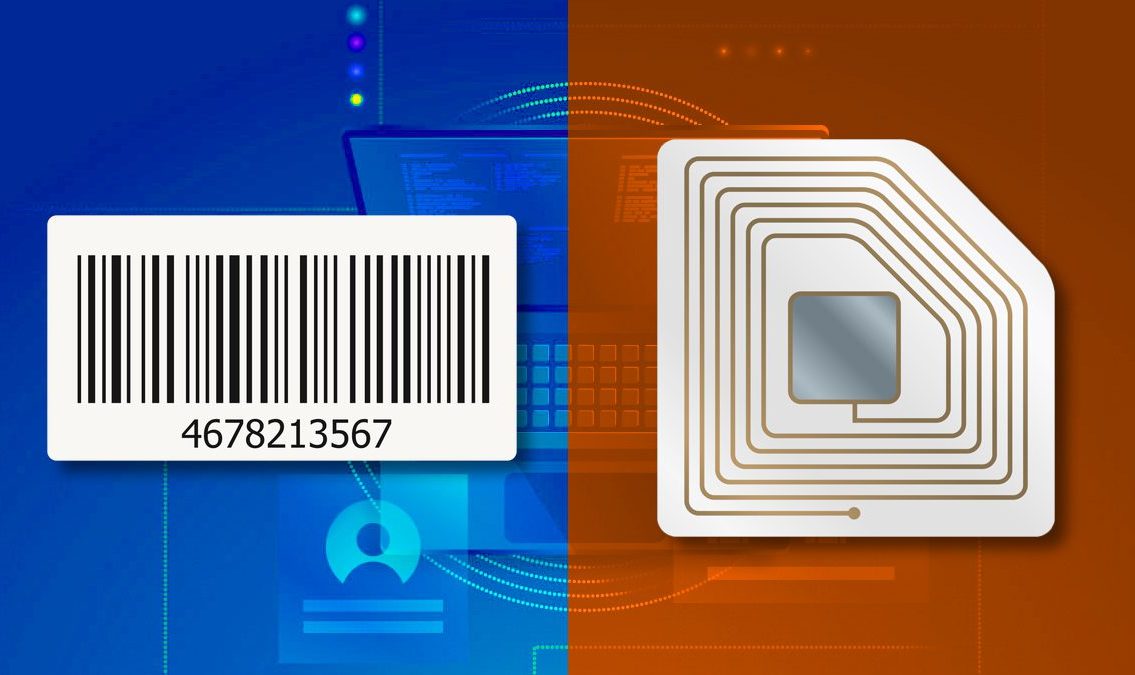RFID vs Barcode: Which is the better choice for asset management?

06/01/2023
In today’s context, improving operational efficiency to reduce costs and boost productivity is more essential than ever. Therefore, selecting the right technology for management and operations plays a crucial role. RFID and Barcode are two commonly used technologies for asset tracking and inventory control. These technologies are applied across various industries such as transportation, retail, manufacturing, and more. Understanding the fundamental differences between RFID and barcodes is key to selecting the most suitable solution, ensuring successful implementation and maximizing return on investment (ROI).
What is a barcode?
A barcode is a method of representing data in a visual, machine-readable format, consisting of a series of parallel black and white lines. When scanned, barcodes provide product information. Barcodes can be read by scanners or even smartphones. Today, barcodes are widely used in retail, asset tracking, and inventory management. There are two main types of barcodes: 1D (one-dimensional) and 2D (two-dimensional).
- 1D barcodes: Simple structure, capable of storing text-based data like product ID or price.
- 2D barcodes: More complex, capable of storing diverse information such as price, quantity, and images.
Advantages of barcodes
- Low investment cost
- Accurate information
- Widely adopted and supported
- Compatible with multiple devices
- Easy to use and implement
Disadvantages of barcodes
- Limited scanning capability; must be scanned in a direct line of sight
- Requires human effort to scan each individual item
- Not suitable for harsh environments (e.g., high temperatures, water, dust)
- Can only store a small amount of data
- Requires close proximity for scanning
What is RFID?
RFID stands for Radio Frequency Identification. It is a wireless identification technology that enables non-contact reading of data stored in a chip via radio waves. RFID tags can be read at distances ranging from 50 cm to 10 meters, depending on the tag type.
Advantages of RFID
- Data is read automatically, with no need for manual scanning of each item—reducing errors
- Ability to read multiple tags at once—saving time in inventory checks
- Can be read from a distance
- High level of data security
- RFID tags are reusable
Disadvantages of RFID
- Signals can be disrupted by certain materials such as liquids or metals
- Implementation is more complex and time-consuming
- Equipment and tag printing costs are higher compared to barcodes
Key Differences Between RFID and Barcode
| Barcode | RFID | |
| Reading performance | Low – must read each item one at a time | High – can read continuously and multiple tags simultaneously |
| Reading range | Reliable at distances < 30 cm | Passive RFID: 2–8 meters Active RFID: 100–150 meters |
| Reading speed | Slow | Very fast (milliseconds) |
| Ability to read through obstacles | Cannot read through objects – requires direct line of sight with barcode and infrared | Can read through most non-metallic/non-liquid materials |
| Identification capability | Mostly used for categorizing assets; not unique per item | Allows unique identification for each tagged asset |
| Cost | Lower | Higher |
Conclusion
Both technologies have their own advantages and disadvantages. However, it is undeniable that RFID is becoming increasingly popular due to the significant benefits it offers businesses, while the cost of RFID implementation continues to decrease.
To find the most suitable solution for your business, please contact 1Gate.
Email: info@1gate.com.vn
Phone: 0778 333 000

Related Articles
- 1Gate’s RFID-Based Traceability & Anti-Counterfeiting System
- Hệ thống truy xuất nguồn gốc và chống giả 1Gate
- RFID Applications in Steel Manufacturing Plants
- Choosing RFID Tags for Metal Surfaces – What You Need to Know
- UNIQLO Implements RFID on a Global Scale
- Walmart, RFID, and the New Retail Strategy
- Ứng dụng RFID trong nhà máy sắt thép
- Lựa chọn thẻ RFID gắn trên kim loại- Những điều cần lưu ý
- UNIQLO áp dụng RFID trên phạm vi toàn cầu




